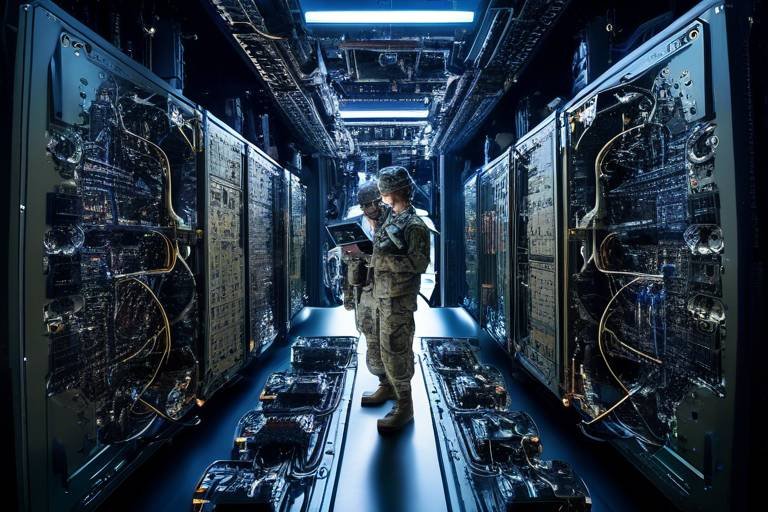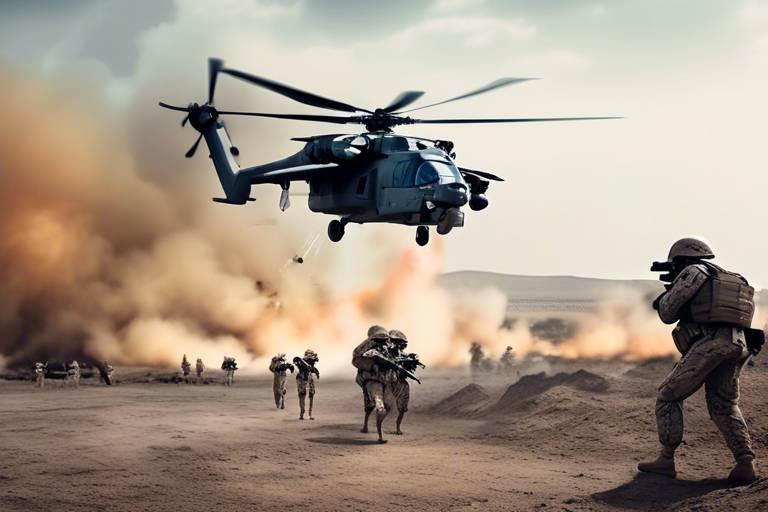Hypersonic Missiles - The Fastest Weapons on the Planet
Welcome to the thrilling world of hypersonic missiles, where speed meets cutting-edge technology! These remarkable weapons are not just fast; they redefine the very notion of speed in warfare. Imagine a missile that can travel over five times the speed of sound—this is the reality of hypersonic technology. As nations around the globe invest heavily in developing these advanced systems, understanding their implications for modern warfare and global security becomes crucial.
Hypersonic missiles are designed to fly at speeds exceeding Mach 5, which translates to over 3,800 miles per hour (6,100 kilometers per hour). This incredible velocity allows them to reach their targets in a fraction of the time it takes conventional missiles. But what exactly are hypersonic missiles? They can be categorized into two main types: hypersonic glide vehicles (HGVs) and hypersonic cruise missiles (HCMs). Each type utilizes different technologies and flight paths, making them unique in their operational capabilities.
The development of hypersonic missiles is not just a technological feat; it represents a significant shift in military strategy. With the ability to evade traditional missile defense systems, hypersonic missiles pose a formidable challenge to existing defense infrastructures. Countries are racing to develop these weapons, leading to a new arms race that could reshape global power dynamics.
In this article, we will explore the fascinating world of hypersonic missiles, their types, advantages, and the challenges they face. We'll also look into the global development of this technology, focusing on key players like the United States, Russia, and China. Finally, we’ll discuss the implications of hypersonic missiles for international security and the need for new strategies in arms control.
Hypersonic missiles are a revolutionary class of weaponry that travel at speeds greater than Mach 5. But what makes them so special? The technology behind hypersonic missiles combines advanced propulsion systems with innovative aerodynamic designs, allowing them to maintain high speeds while maneuvering in flight. This capability makes them incredibly difficult to detect and intercept, creating a new set of challenges for military defense systems.
To understand hypersonic missiles better, let's break them down into their two main categories:
- Hypersonic Glide Vehicles (HGVs): Launched into the atmosphere, these missiles glide towards their targets, utilizing lift generated by their wings.
- Hypersonic Cruise Missiles (HCMs): These missiles maintain hypersonic speeds throughout their flight, powered by advanced engines that allow for sustained propulsion.
Each type has its own unique flight characteristics and tactical advantages, making them valuable assets in modern military arsenals.
Understanding the two primary types of hypersonic missiles is essential for grasping their potential impact on warfare. Hypersonic Glide Vehicles (HGVs) are designed to be launched into the upper atmosphere and then glide down to their targets. Their flight paths are unpredictable, making them difficult to target with existing missile defense systems. On the other hand, Hypersonic Cruise Missiles (HCMs) maintain high speeds throughout their flight, allowing for greater range and precision.
HGVs operate by first being launched into the atmosphere, where they then glide towards their target. This flight pattern allows them to evade radar detection and traditional missile defense systems. Their maneuverability is a game-changer in modern warfare, as they can change direction and altitude mid-flight, making interception nearly impossible.
The advantages of hypersonic glide vehicles are numerous:
- Speed: They can reach their targets much faster than conventional missiles.
- Maneuverability: Their ability to change course makes them more difficult to predict and intercept.
- Low Radar Signature: The gliding flight path allows them to fly at lower altitudes, reducing their visibility to radar systems.
Despite their impressive capabilities, HGVs face significant challenges, including:
- Technological Limitations: Developing reliable guidance systems that can operate at hypersonic speeds is a major hurdle.
- Cost: The research and development of HGVs require substantial investment.
Unlike HGVs, hypersonic cruise missiles maintain their hypersonic speeds throughout their entire flight. This capability allows for extended ranges and greater precision in targeting. HCMs are powered by advanced propulsion systems, making them a formidable option for long-range military operations.
The race to develop hypersonic missile technology is heating up, with several countries making significant advancements. The United States, Russia, and China are at the forefront of this technological arms race, each striving to gain a strategic advantage over the others.
The U.S. has heavily invested in hypersonic research and development, with various programs aimed at enhancing military capabilities. Key initiatives include:
- Advanced Hypersonic Weapon (AHW): A program focused on developing HGVs.
- Conventional Prompt Strike (CPS): Aiming to create precision strike capabilities using hypersonic technology.
Russia and China have also made significant strides in hypersonic technology, with both countries showcasing their capabilities through successful tests. These advancements have raised concerns about shifting global power dynamics and the potential for a new arms race.
The emergence of hypersonic missiles brings new challenges to international security. As these weapons become more prevalent, nations must adapt their military strategies and defense systems to address the threats posed by hypersonic technology.
As hypersonic missiles change the landscape of warfare, nations must rethink their deterrence and defense strategies. The effectiveness of traditional missile defense systems is being called into question, leading to discussions about potential responses to hypersonic threats.
The rise of hypersonic technology raises critical arms control issues. There is a pressing need for new treaties and frameworks to manage the proliferation of these advanced weapons, ensuring that global security is not compromised.
- What are hypersonic missiles? Hypersonic missiles are advanced weaponry capable of traveling at speeds greater than Mach 5.
- What are the two main types of hypersonic missiles? The two main types are hypersonic glide vehicles (HGVs) and hypersonic cruise missiles (HCMs).
- Why are hypersonic missiles a concern for global security? Their speed and maneuverability make them difficult to intercept, posing new challenges to existing defense systems.
- Which countries are leading in hypersonic missile development? The United States, Russia, and China are the primary players in hypersonic missile technology development.
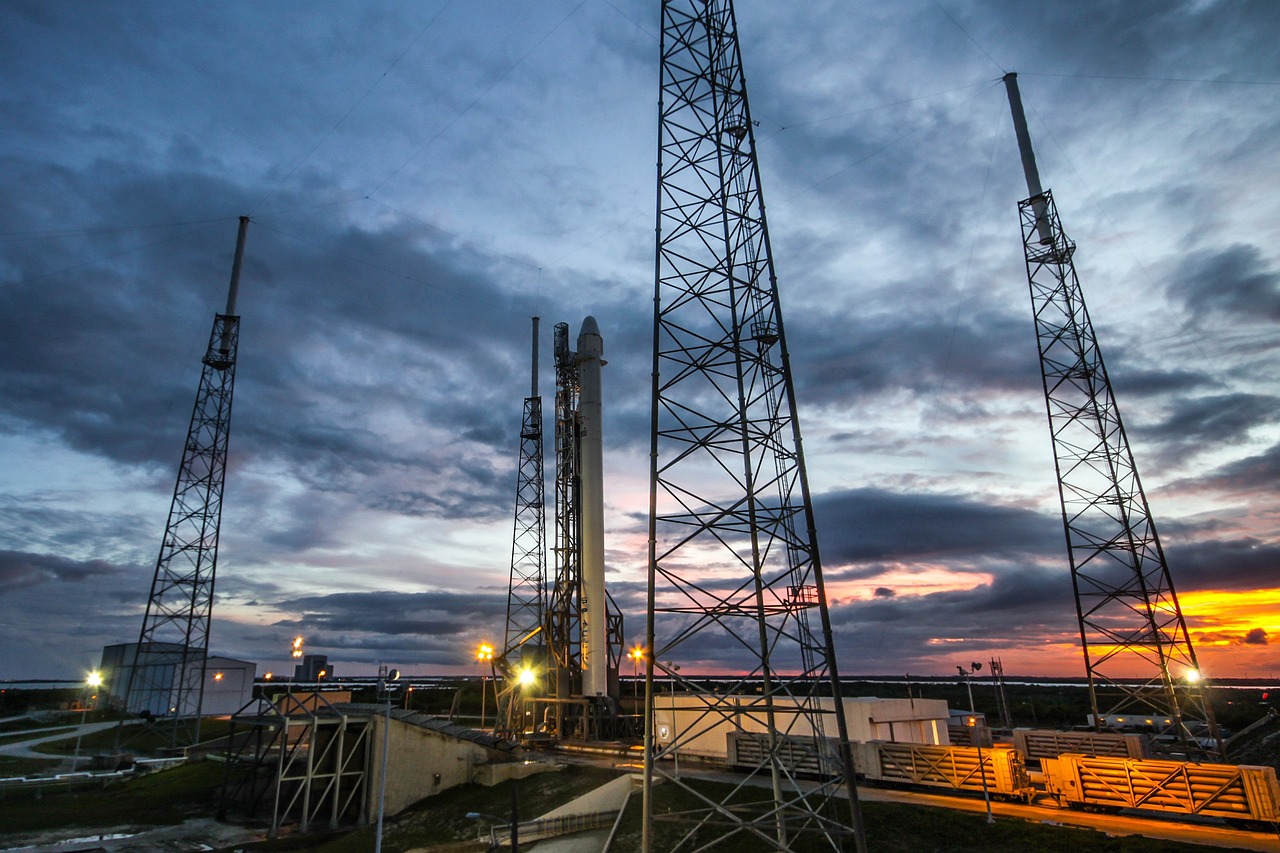
What Are Hypersonic Missiles?
Hypersonic missiles are the cutting-edge of modern warfare technology, capable of reaching astonishing speeds greater than Mach 5, which is five times the speed of sound. Imagine a projectile that can travel at over 3,800 miles per hour! This speed is not just impressive; it fundamentally alters the dynamics of military strategy and defense systems. To put it in perspective, while traditional ballistic missiles take time to reach their targets, hypersonic missiles can cover vast distances in mere minutes, making them a formidable challenge for any defense system.
These advanced weapons are classified into two main categories: Hypersonic Glide Vehicles (HGVs) and Hypersonic Cruise Missiles (HCMs). Each type employs different technologies and flight patterns, but both share the common trait of incredible speed. HGVs are launched into the atmosphere and glide towards their targets, while HCMs maintain hypersonic speeds throughout their flight, allowing for sustained range and precision. This distinction is crucial for understanding their operational use and strategic implications.
The technology behind hypersonic missiles involves a combination of advanced propulsion systems and aerodynamic designs that enable them to navigate through the atmosphere at such high speeds. These missiles utilize scramjet engines or other innovative propulsion methods to achieve and sustain hypersonic speeds, which presents unique engineering challenges. The ability to maneuver at these speeds further complicates detection and interception efforts, making hypersonic missiles a game-changer in the realm of military capabilities.
In summary, hypersonic missiles represent a significant leap forward in weapon technology, characterized by their remarkable speed, maneuverability, and potential to evade conventional defense systems. As nations continue to develop and refine these weapons, the implications for global security and military strategy become increasingly profound.
- What is the difference between HGVs and HCMs?
HGVs glide towards their targets after being launched, while HCMs maintain hypersonic speeds throughout their flight.
- Why are hypersonic missiles considered a threat?
Due to their high speed and maneuverability, they can evade traditional missile defense systems, making them difficult to intercept.
- Which countries are developing hypersonic technology?
Countries like the United States, Russia, and China are leading the development of hypersonic missile technology.

Types of Hypersonic Missiles
When we dive into the world of hypersonic missiles, we encounter two primary types: hypersonic glide vehicles (HGVs) and hypersonic cruise missiles (HCMs). Each of these missile types is designed with unique characteristics and operational capabilities that make them stand out in modern warfare. Understanding the distinctions between them is crucial for grasping their roles on the battlefield.
Hypersonic Glide Vehicles (HGVs) are launched into the upper atmosphere, typically by a rocket, and then glide towards their target at incredible speeds. Unlike traditional ballistic missiles that follow a predictable parabolic trajectory, HGVs can maneuver during their descent, which makes them particularly challenging for existing missile defense systems to track and intercept. Their ability to change direction mid-flight adds an element of unpredictability, making them a formidable weapon in any nation's arsenal.
On the other hand, Hypersonic Cruise Missiles (HCMs) are designed to maintain hypersonic speeds throughout their flight path. These missiles utilize advanced propulsion systems, such as scramjets, which allow them to travel at speeds exceeding Mach 5 while remaining in the atmosphere. HCMs are generally more versatile than HGVs, as they can be launched from various platforms, including ships and submarines, and can strike targets at long ranges with precision. This sustained speed capability means that HCMs can cover vast distances quickly, making them ideal for rapid response scenarios.
To summarize the differences between these two types of hypersonic missiles, we can look at the following table:
| Feature | Hypersonic Glide Vehicles (HGVs) | Hypersonic Cruise Missiles (HCMs) |
|---|---|---|
| Flight Path | Glides after launch | Maintains speed throughout |
| Maneuverability | High | Moderate |
| Launch Platforms | Typically rocket-launched | Various platforms (ships, subs, aircraft) |
| Primary Use | Evading defenses | Long-range precision strikes |
Both HGVs and HCMs represent a significant leap in military technology, and their development has sparked a global arms race. As nations strive to enhance their hypersonic capabilities, the implications for military strategy and global security become increasingly complex. The evolution of these weapons is not just about speed; it's about redefining the rules of engagement and the very nature of warfare itself.
- What speeds do hypersonic missiles achieve? Hypersonic missiles travel at speeds greater than Mach 5, which is over 3,800 miles per hour!
- How do hypersonic missiles evade detection? Their speed and ability to maneuver make them difficult for traditional radar systems to track.
- Which countries are developing hypersonic missile technology? Major players include the United States, Russia, and China, each making significant advancements in this field.

Hypersonic Glide Vehicles (HGVs)
Hypersonic Glide Vehicles, or HGVs, represent a groundbreaking leap in military technology, capable of traveling at speeds greater than Mach 5—five times the speed of sound. But what exactly does this mean? Imagine a projectile that can traverse vast distances in mere minutes, rendering traditional defenses nearly obsolete. HGVs are launched into the upper atmosphere, where they then glide towards their targets, making them incredibly difficult to track and intercept.
One of the most intriguing aspects of HGVs is their flight pattern. Unlike conventional ballistic missiles that follow a predictable parabolic trajectory, HGVs can maneuver during flight. This agility allows them to evade radar systems, making them a formidable challenge for even the most advanced missile defense systems. The ability to change direction mid-flight means that HGVs can reach their targets from unexpected angles, complicating defense strategies.
So, what are the specific advantages of HGVs that make them stand out in modern warfare? Here are some key points:
- Speed: HGVs can reach their targets in a fraction of the time it would take conventional missiles, reducing the response time of enemy defenses.
- Maneuverability: Their ability to change course mid-flight makes them unpredictable, enhancing their chances of hitting their targets.
- Low-altitude flight: HGVs can fly at lower altitudes compared to traditional ballistic missiles, which helps them avoid detection by radar systems.
However, it's essential to recognize that despite their impressive capabilities, HGVs are not without challenges. The technology behind these vehicles is still in its infancy, and there are significant hurdles to overcome. For instance, developing precise guidance systems that can function at hypersonic speeds is a complex task. Furthermore, the materials used in HGV construction must withstand extreme temperatures generated during flight, presenting another layer of engineering challenges.
As nations invest heavily in HGV technology, the implications for military strategy are profound. The introduction of HGVs into a nation's arsenal could shift the balance of power, compelling other countries to enhance their own military capabilities. This arms race could lead to a new era of warfare, where speed and precision become the primary determinants of success on the battlefield.
In summary, hypersonic glide vehicles are not just a technological marvel; they symbolize a potential shift in how conflicts could unfold in the future. As research and development continue, the military landscape will undoubtedly evolve, prompting nations to rethink their defense strategies and consider the implications of these advanced weapons.
- What is the primary purpose of HGVs? HGVs are designed to deliver payloads quickly and accurately while evading traditional missile defenses.
- How do HGVs differ from traditional missiles? Unlike traditional missiles that follow a predictable trajectory, HGVs can maneuver during flight, making them harder to intercept.
- What challenges do HGVs face? Key challenges include developing precise guidance systems and materials that can withstand the extreme conditions of hypersonic flight.
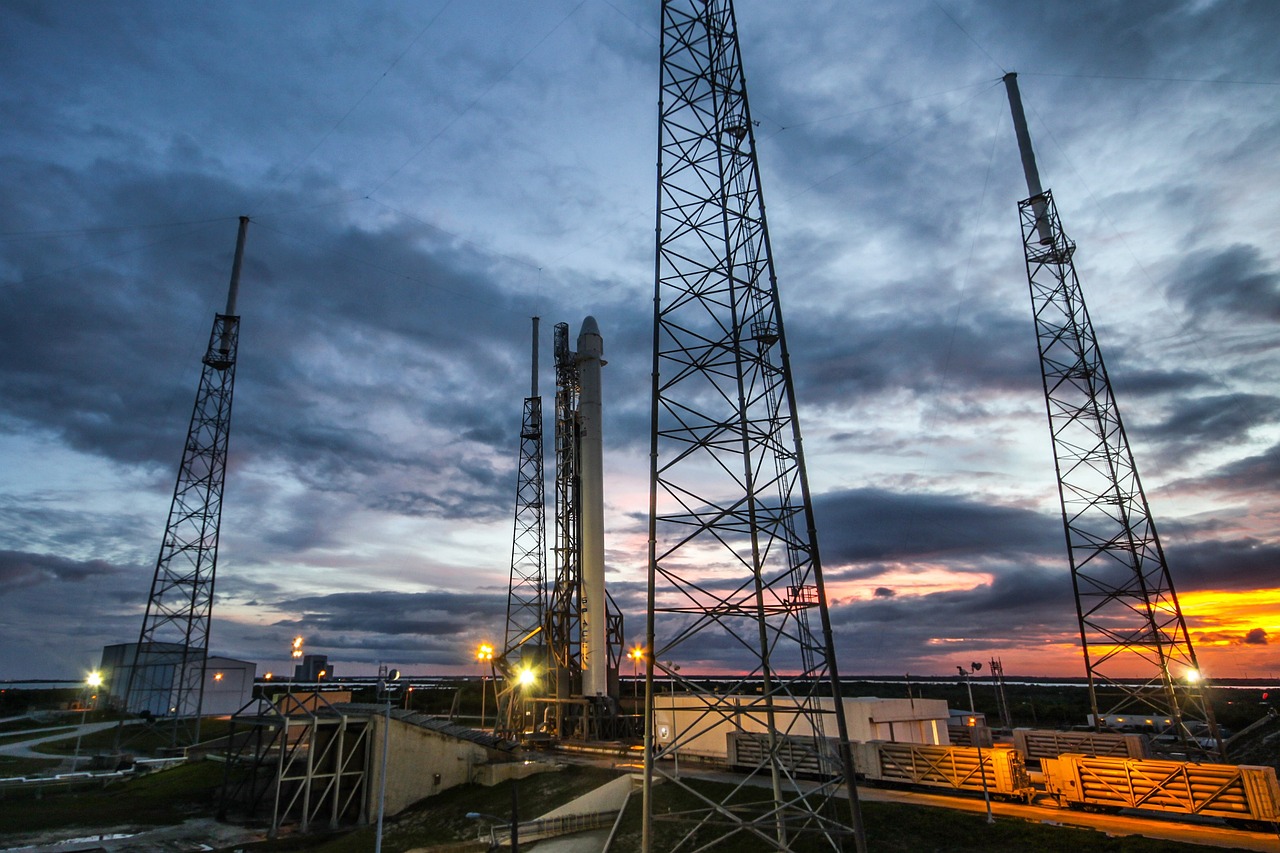
Advantages of HGVs
Hypersonic Glide Vehicles (HGVs) are not just another piece of military technology; they represent a quantum leap in the capabilities of modern warfare. One of the most significant advantages of HGVs is their incredible speed. Traveling at speeds greater than Mach 5, these missiles can cover vast distances in a matter of minutes, making them a formidable threat to any adversary. Imagine a weapon that can strike targets before the enemy even knows it’s coming—this is the reality with HGVs.
Another key advantage of HGVs lies in their maneuverability. Unlike traditional ballistic missiles that follow a predictable parabolic trajectory, HGVs can glide through the atmosphere, altering their flight path mid-course. This ability to change direction makes them extremely difficult to intercept with existing missile defense systems. To put it simply, it’s like trying to hit a moving target that can change its course at the last second—nearly impossible!
Moreover, HGVs have the potential to bypass radar detection. Their flight profiles and speeds allow them to evade early warning systems, catching defenders off guard. This stealth capability adds another layer of complexity to military defense strategies, as nations must now account for threats that can appear out of nowhere. In essence, HGVs are like stealthy predators in the vast ocean of military capabilities, ready to strike when least expected.
Additionally, the versatility of HGVs is noteworthy. They can be equipped with various payloads, including conventional explosives or nuclear warheads, allowing for a range of tactical applications. This flexibility enables military planners to use HGVs in diverse scenarios, from precision strikes to strategic deterrence. In a world where adaptability is key, HGVs offer a multi-faceted approach to modern combat.
In summary, the advantages of Hypersonic Glide Vehicles are profound and multifaceted. Their speed, maneuverability, radar evasion capabilities, and versatility make them a revolutionary force in contemporary military strategy. As nations continue to develop this technology, the implications for global security and warfare will be significant, reshaping the landscape of international relations.
- What are hypersonic glide vehicles? Hypersonic glide vehicles are advanced missiles that travel at speeds exceeding Mach 5 and can maneuver during flight, making them difficult to intercept.
- How do HGVs evade radar systems? HGVs can glide at lower altitudes and change their flight path, allowing them to avoid detection by traditional radar systems.
- What are the potential applications of HGVs? HGVs can be used for various military purposes, including precision strikes and strategic deterrence, depending on their payload.
- Are HGVs a threat to global security? Yes, the development of HGV technology poses new challenges to international security, as they can change the dynamics of military strategy and arms control.
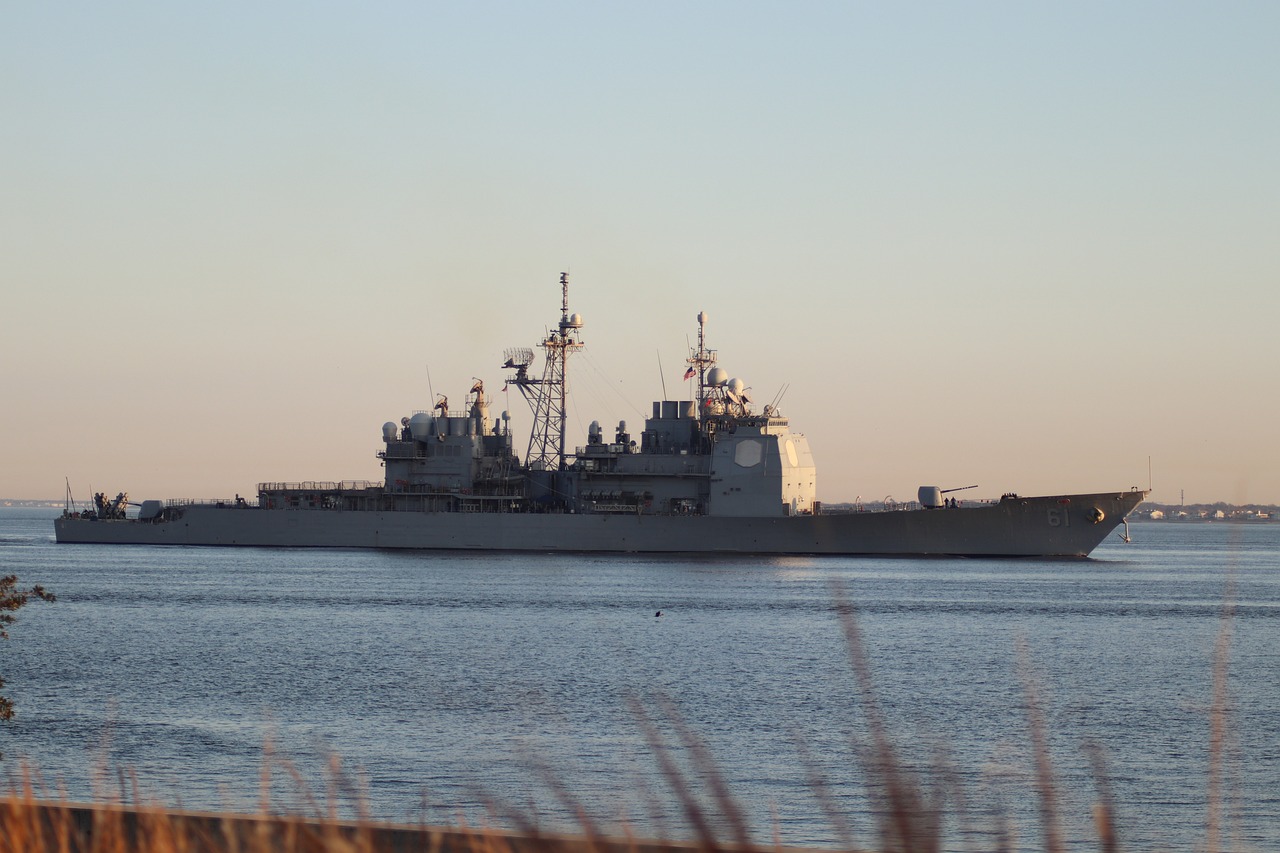
Challenges Facing HGVs
While hypersonic glide vehicles (HGVs) represent a remarkable leap in military technology, they are not without their challenges. One of the most pressing issues is the technological limitations that come with achieving and maintaining hypersonic speeds. The extreme velocities at which HGVs operate create intense heat and pressure, which can lead to structural failure if materials are not engineered to withstand such conditions. This necessitates ongoing research and development to discover new materials and designs that can endure the rigors of hypersonic flight.
Another significant hurdle is the need for precise guidance during flight. Unlike traditional missiles that follow a predictable trajectory, HGVs must maneuver through the atmosphere to evade detection and interception. This requires advanced navigation systems capable of real-time adjustments and accurate targeting. Developing such technology is a complex challenge, as it demands not only sophisticated algorithms but also reliable communication systems that can function effectively at hypersonic speeds.
Moreover, the cost of development for HGVs is another critical factor. Governments and defense contractors are investing billions of dollars into research and testing, which can strain budgets and resources. This financial burden raises questions about the sustainability of hypersonic programs in the long term, especially when set against other pressing military needs.
Lastly, the political and strategic implications of deploying HGVs cannot be overlooked. The introduction of such advanced weaponry can lead to an arms race, prompting other nations to accelerate their own hypersonic programs in response. This dynamic can destabilize existing power balances and make international relations more precarious. As countries vie for hypersonic capabilities, the potential for miscalculation and conflict increases, creating a complex web of challenges that extend beyond the technical realm.
In summary, while HGVs are poised to revolutionize military strategy, their development is fraught with challenges that must be addressed. From technological limitations and guidance systems to financial constraints and geopolitical ramifications, the road ahead is anything but straightforward.
- What are hypersonic glide vehicles (HGVs)? HGVs are advanced missiles capable of traveling at speeds greater than Mach 5, utilizing a gliding flight path to reach their targets.
- What are the main challenges facing HGVs? Key challenges include technological limitations, the need for precise guidance, high development costs, and potential political ramifications.
- How do HGVs differ from traditional missiles? HGVs can maneuver during flight, making them harder to detect and intercept compared to traditional ballistic missiles, which follow a predictable trajectory.
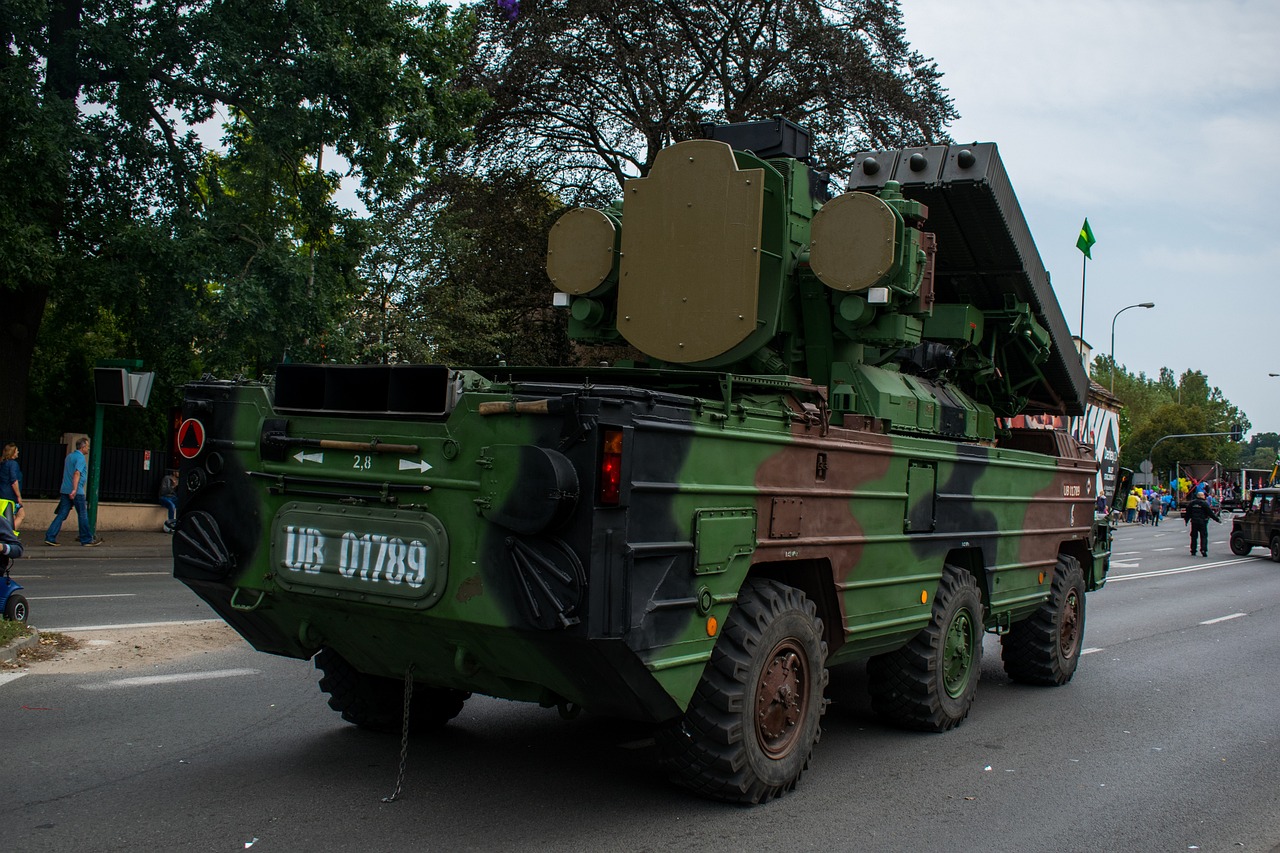
Hypersonic Cruise Missiles (HCMs)
Hypersonic cruise missiles (HCMs) represent a groundbreaking leap in military technology, capable of maintaining sustained speeds greater than Mach 5 throughout their flight. Unlike traditional missiles that rely on rocket propulsion, HCMs utilize advanced air-breathing engines, allowing them to glide through the atmosphere while traveling at astonishing velocities. This unique capability not only enhances their range but also significantly improves their precision, making them a formidable asset in modern warfare.
One of the most intriguing aspects of HCMs is their operational flexibility. They can be launched from various platforms, including ships, submarines, and land-based installations. This versatility enables military forces to deploy them in a range of scenarios, from targeting enemy installations to intercepting incoming threats. The ability to sustain hypersonic speeds provides HCMs with a tactical edge, allowing them to evade conventional missile defense systems that are often designed to counter slower, ballistic threats.
The design of HCMs incorporates cutting-edge materials and technologies that allow them to withstand extreme temperatures and pressures during flight. These missiles are engineered for agility, which enables them to perform complex maneuvers mid-flight. This feature not only complicates interception efforts but also increases the likelihood of successfully hitting high-value targets. The combination of speed, range, and maneuverability makes HCMs a game-changer on the battlefield.
However, with great power comes great responsibility. The proliferation of HCM technology raises significant concerns regarding global security and stability. As nations race to develop their own hypersonic capabilities, the potential for an arms race looms large. It's crucial for international leaders to engage in dialogue and establish frameworks to manage these advancements responsibly.
To further illustrate the capabilities and implications of HCMs, consider the following table that compares key features of hypersonic cruise missiles with traditional missile systems:
| Feature | Hypersonic Cruise Missiles (HCMs) | Traditional Missiles |
|---|---|---|
| Speed | Exceeds Mach 5 | Typically below Mach 3 |
| Range | Extended range due to sustained flight | Limited by propulsion type |
| Maneuverability | Highly agile, capable of complex maneuvers | Less agile, follows predictable trajectories |
| Defense Evasion | Designed to evade detection and interception | More susceptible to existing defense systems |
In conclusion, hypersonic cruise missiles are not just a technological marvel; they signify a shift in the dynamics of military strategy. As nations continue to invest in this technology, the global landscape of defense and deterrence will inevitably evolve, demanding new approaches to security and international relations. The conversation surrounding hypersonic capabilities is just beginning, and it will be fascinating to see how it unfolds in the coming years.
- What are hypersonic cruise missiles?
Hypersonic cruise missiles are advanced weapons that can travel at speeds greater than Mach 5 while maintaining sustained flight, allowing for greater range and precision. - How do hypersonic cruise missiles differ from traditional missiles?
Unlike traditional missiles, which typically follow a ballistic trajectory, HCMs use air-breathing engines and can maneuver mid-flight, making them harder to intercept. - What are the implications of hypersonic technology on global security?
The development of hypersonic missiles raises concerns about an arms race and the need for new international treaties to manage their proliferation and ensure global stability.

Global Development of Hypersonic Technology
The race for hypersonic missile technology is not just a technological competition; it’s a strategic chess game that involves some of the world's most powerful nations. As countries strive to develop these advanced weapons, the implications for global security become increasingly complex. Hypersonic missiles, which can travel at speeds exceeding Mach 5, are poised to revolutionize modern warfare, making traditional defense systems obsolete. This section will explore the key players in this arms race, their advancements, and the potential consequences for international stability.
At the forefront of this competition are the United States, Russia, and China. Each of these nations is pouring resources into hypersonic research and development, driven by the desire to maintain or achieve military superiority. The stakes are high, as hypersonic technology promises not only speed but also enhanced maneuverability, making these missiles extremely difficult to intercept.
To give you a clearer picture, let’s break down the current landscape of hypersonic technology development:
| Country | Key Programs | Current Status |
|---|---|---|
| United States | Conventional Prompt Strike, Army Hypersonic Missile | Advanced testing phases, with an aim for deployment by 2025 |
| Russia | Avangard, Kinzhal | Operational deployment, demonstrated capabilities in military exercises |
| China | DF-ZF, Xingkong-2 | Successful tests, rapidly advancing capabilities |
As illustrated in the table above, each country is pursuing its unique hypersonic programs, with varying degrees of success and operational readiness. The U.S. is focusing on integrating hypersonic capabilities into its existing military framework, while Russia has already showcased its hypersonic arsenal in real-world scenarios, raising alarms among its adversaries. Meanwhile, China is not far behind, with successful tests that indicate a robust commitment to developing hypersonic technology.
The implications of these developments are profound. As hypersonic missiles become operational, they will force nations to rethink their defense strategies. Traditional missile defense systems, which rely on detecting and intercepting threats, may struggle to cope with the speed and unpredictability of hypersonic flight. This could lead to a new arms race, as nations scramble to develop countermeasures or their own hypersonic capabilities.
Moreover, the global balance of power is at stake. Countries that successfully develop and deploy hypersonic technology could gain a significant strategic advantage, altering alliances and prompting nations to reassess their military postures. It’s a high-stakes game where technology could determine the future of warfare.
- What are hypersonic missiles? Hypersonic missiles are advanced weapon systems that can travel at speeds greater than Mach 5, making them extremely fast and difficult to intercept.
- How do hypersonic missiles differ from traditional missiles? Unlike traditional missiles that follow a predictable trajectory, hypersonic missiles can maneuver during flight, making them harder to detect and defend against.
- Which countries are leading in hypersonic technology development? The United States, Russia, and China are the primary players in the hypersonic arms race, each investing heavily in research and development.
- What are the implications of hypersonic missile technology for global security? The emergence of hypersonic missiles poses challenges for traditional defense systems, potentially leading to a new arms race and altering the global balance of power.

United States Initiatives
The United States has recognized the strategic importance of hypersonic missile technology and has poured significant resources into its research and development. This initiative stems from a desire to maintain military superiority in an increasingly competitive global landscape. The Pentagon has allocated billions of dollars to various programs aimed at developing hypersonic capabilities, with the goal of countering advances made by adversaries like Russia and China. Among these initiatives are the Army's Long Range Hypersonic Weapon (LRHW), the Navy's Conventional Prompt Strike (CPS), and the Air Force's Hypersonic Attack Cruise Missile (HACM). Each of these projects is designed to enhance the U.S. military's ability to strike targets at unparalleled speeds and with high precision.
For instance, the Long Range Hypersonic Weapon is a game-changer that utilizes a hypersonic glide vehicle to deliver warheads at speeds greater than Mach 5. This weapon is not just about speed; it’s also about the ability to maneuver during flight, making it difficult for enemy defense systems to intercept. The U.S. Army has been actively testing these systems, aiming to have them operational within the next few years. Meanwhile, the Navy is focusing on its Conventional Prompt Strike program, which aims to provide a rapid response capability to global threats, further enhancing the United States' deterrent posture.
Additionally, the Air Force is not lagging behind. The Hypersonic Attack Cruise Missile program is designed to integrate hypersonic technology into existing airframes, allowing for a versatile platform that can be used in various combat scenarios. These initiatives reflect a broader strategy to integrate hypersonic capabilities across all branches of the military, ensuring a cohesive approach to modern warfare.
To support these ambitious projects, the U.S. government has also fostered partnerships with private defense contractors and research institutions. This collaboration is crucial for integrating cutting-edge technologies such as artificial intelligence and advanced materials into hypersonic systems. The goal is to not only develop these weapons but also to ensure they are reliable and effective in real-world scenarios.
In summary, the United States' initiatives in hypersonic technology represent a significant investment in maintaining military dominance. As these programs progress, they promise to reshape the future of warfare, making hypersonic missiles a cornerstone of U.S. defense strategy. However, as with any advanced technology, these developments also raise questions about global security and the potential for an arms race.
- What are hypersonic missiles? Hypersonic missiles are advanced weapons capable of traveling at speeds greater than Mach 5, making them significantly faster than traditional missiles.
- Why is the U.S. investing in hypersonic technology? The U.S. aims to maintain military superiority and counter advancements made by other nations, particularly Russia and China.
- What are the different types of hypersonic missiles? The two primary types are hypersonic glide vehicles (HGVs) and hypersonic cruise missiles (HCMs), each with unique capabilities and applications.
- How do hypersonic missiles evade detection? Their high speeds and ability to maneuver during flight make them difficult for traditional missile defense systems to intercept.
- What are the implications of hypersonic missiles for global security? The emergence of hypersonic technology poses new challenges for military strategy, arms control, and international relations.

Russia and China’s Progress
In recent years, Russia and China have emerged as formidable players in the hypersonic missile arena, rapidly advancing their technologies and capabilities. The race to develop hypersonic weapons is not merely about speed; it’s a strategic maneuver that reshapes the global military landscape. Both nations have invested heavily in research and development, aiming to outpace their rivals and secure their positions as leaders in this cutting-edge field.
Russia has made significant strides with its Avangard hypersonic glide vehicle, which is designed to evade missile defense systems by maneuvering unpredictably during its flight. This capability allows it to strike targets with unprecedented speed and accuracy. The Avangard can reportedly reach speeds of up to Mach 27, making it one of the fastest weapons ever developed. Additionally, Russia's Tsirkon missile, a hypersonic cruise missile, is capable of being launched from ships and submarines, further enhancing its versatility and reach.
On the other hand, China is not lagging behind. The Chinese military has been actively testing its DF-ZF hypersonic glide vehicle, which is part of a broader strategy to modernize its armed forces. The DF-ZF is designed to travel at speeds exceeding Mach 5 and can maneuver during flight, making it difficult for existing defense systems to intercept. Furthermore, China is reportedly developing a range of hypersonic cruise missiles that could redefine its military capabilities and extend its range of operations across the Asia-Pacific region.
The advancements made by Russia and China have raised alarms in the West, prompting discussions about the implications for global security. As these nations continue to refine their hypersonic technologies, the potential for an arms race looms larger. The following table summarizes key hypersonic developments from both countries:
| Country | Missile Name | Type | Speed (Mach) | Key Features |
|---|---|---|---|---|
| Russia | Avangard | Hypersonic Glide Vehicle | Up to 27 | Maneuverable, evades defenses |
| Russia | Tsirkon | Hypersonic Cruise Missile | Up to 8 | Ship and submarine launched |
| China | DF-ZF | Hypersonic Glide Vehicle | Exceeds 5 | Maneuverable, long-range |
As both countries push the envelope of hypersonic technology, the implications for military strategy are profound. The ability to strike quickly and with precision can alter the calculus of deterrence, making traditional defense systems less effective. This evolving landscape compels nations to rethink their security strategies and consider new forms of defense against these advanced threats.
- What is a hypersonic missile? Hypersonic missiles are weapons capable of traveling at speeds greater than Mach 5, which is five times the speed of sound.
- How do hypersonic missiles differ from traditional missiles? Unlike traditional missiles, hypersonic missiles can maneuver during flight, making them harder to detect and intercept.
- Why are Russia and China focusing on hypersonic technology? Both nations see hypersonic technology as a way to enhance their military capabilities and maintain strategic advantages over their rivals.

Implications for Global Security
The emergence of hypersonic missiles is not just a technological marvel; it is reshaping the very fabric of global security. As nations develop and deploy these advanced weapons, the implications extend far beyond military might. The speed and agility of hypersonic missiles introduce new dynamics in warfare, prompting a reevaluation of existing military strategies and international relations.
One of the most pressing concerns is the potential for an arms race. Countries that lag behind in hypersonic technology may feel compelled to accelerate their own programs, leading to a cycle of escalation. This race could destabilize regions and increase the likelihood of conflict, as nations may misinterpret defensive measures as aggressive posturing. Imagine a world where nations are constantly on edge, each one fearing that the other might strike first with these incredibly fast and hard-to-detect weapons.
Moreover, hypersonic missiles challenge traditional deterrence strategies. The very essence of deterrence relies on the ability to respond to threats in a timely manner. With hypersonic speeds, the window for response shrinks dramatically, making it increasingly difficult for nations to react appropriately to an incoming threat. This raises a crucial question: how can a nation defend itself when its adversary can strike in mere minutes?
As the balance of power shifts, defense strategies must evolve. Nations are exploring various options, including the development of advanced radar systems and interception technologies designed to counter hypersonic threats. However, the effectiveness of these systems remains uncertain. The challenge lies not only in detection but also in interception, as hypersonic missiles can maneuver unpredictably, making them difficult targets for traditional missile defense systems.
Additionally, the rise of hypersonic technology brings forth critical arms control considerations. The existing treaties and frameworks may not adequately address the complexities introduced by these advanced weapons. New agreements will be necessary to manage their proliferation and mitigate the risks associated with their deployment. This could involve international dialogues aimed at establishing norms and transparency measures to prevent misunderstandings and unintended escalations.
In light of these challenges, nations must engage in proactive diplomacy to address the implications of hypersonic missiles. Collaborative efforts could pave the way for a more stable security environment, where nations work together to establish rules of engagement regarding hypersonic technology. The goal should be to foster an atmosphere of trust and cooperation, rather than one of fear and suspicion.
- What are hypersonic missiles? Hypersonic missiles are advanced weapons that travel at speeds greater than Mach 5, making them extremely fast and difficult to intercept.
- How do hypersonic missiles affect global security? They introduce new challenges to military strategies and deterrence, potentially leading to an arms race and increased tensions among nations.
- What are the types of hypersonic missiles? The two main types are hypersonic glide vehicles (HGVs) and hypersonic cruise missiles (HCMs), each with unique capabilities and operational uses.
- Can existing missile defense systems counter hypersonic threats? Current missile defense systems may struggle to intercept hypersonic missiles due to their speed and maneuverability.
- What is the future of arms control regarding hypersonic technology? New treaties and frameworks will likely be needed to manage the proliferation of hypersonic missiles and ensure global security.

Deterrence and Defense Strategies
The emergence of hypersonic missiles has significantly transformed the landscape of modern warfare, compelling nations to rethink their . With the ability to travel at speeds exceeding Mach 5, these weapons pose a unique challenge to traditional military paradigms. Imagine a chess game where the pieces can move not only faster but also unpredictably; this is essentially what hypersonic technology introduces to military strategy.
To effectively counter the threats posed by hypersonic missiles, nations must develop multi-layered defense systems that can detect, track, and intercept these incredibly fast-moving targets. This involves not just upgrading existing missile defense systems but also integrating advanced technologies such as artificial intelligence and machine learning to enhance situational awareness and response times. The complexity of intercepting a hypersonic missile is akin to trying to catch a bullet with another bullet—it's a daunting task that requires precision and speed.
Countries are exploring various deterrence strategies to mitigate the risks associated with hypersonic capabilities. For instance, the concept of active defense focuses on preemptively neutralizing threats before they reach their targets. This could involve deploying advanced radar systems capable of detecting hypersonic flight patterns or utilizing interceptors designed specifically for these high-speed threats. Additionally, nations may consider counter-strike capabilities that ensure a swift and effective retaliation, thereby maintaining a balance of power.
Furthermore, diplomatic measures play a crucial role in addressing the challenges posed by hypersonic weapons. Engaging in international dialogues and arms control negotiations can help establish norms and agreements aimed at curbing the proliferation of these advanced technologies. A potential framework could involve transparency measures where nations disclose their hypersonic programs, fostering a sense of trust and reducing the likelihood of an arms race.
Here’s a brief overview of some key deterrence strategies:
- Active Defense Systems: Developing advanced missile defense systems that can intercept hypersonic threats.
- Counter-Strike Capabilities: Ensuring rapid retaliation options to deter potential aggressors.
- Diplomatic Engagement: Promoting international agreements to manage and control hypersonic arms proliferation.
In conclusion, as hypersonic missiles redefine the rules of engagement, nations must adapt their strategies accordingly. The combination of technological innovation, military readiness, and diplomatic efforts will be essential in navigating this new era of warfare. Just as the invention of the airplane changed military tactics in the past, hypersonic technology is poised to do the same, making it imperative for nations to stay ahead of the curve.
- What are hypersonic missiles?
Hypersonic missiles are advanced weaponry capable of traveling at speeds greater than Mach 5, making them difficult to detect and intercept. - How do hypersonic missiles differ from traditional missiles?
Unlike traditional missiles that follow predictable ballistic trajectories, hypersonic missiles can maneuver mid-flight, complicating interception efforts. - What are the implications of hypersonic technology for global security?
The development of hypersonic missiles poses new challenges for international security, potentially destabilizing existing power balances and provoking arms races. - How are countries responding to the hypersonic threat?
Countries are enhancing their missile defense systems, developing counter-strike capabilities, and engaging in diplomatic efforts to manage the proliferation of hypersonic weapons.
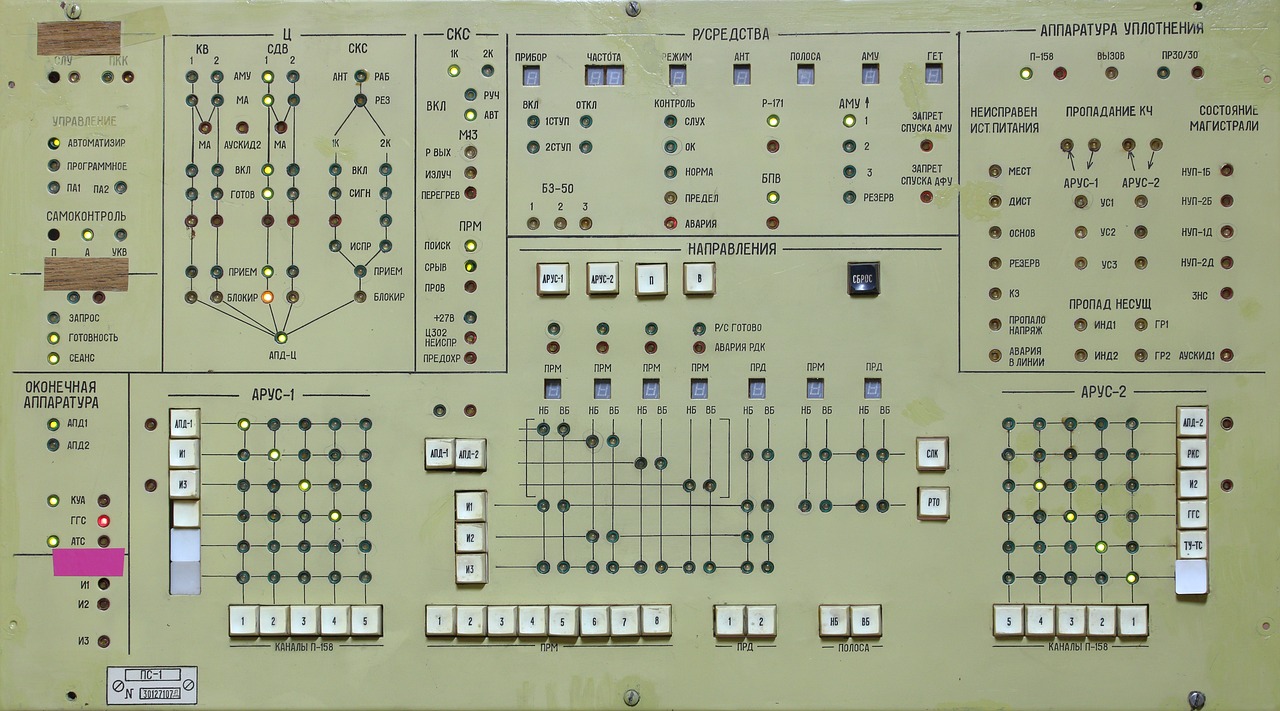
Arms Control Considerations
The rapid development of hypersonic missiles is shaking the very foundations of global security and arms control. As nations race to enhance their military capabilities, the need for effective arms control measures has become increasingly urgent. Hypersonic technology, with its ability to fly at speeds greater than Mach 5, presents unique challenges that existing treaties and frameworks were not designed to address. This raises a critical question: how can the international community effectively manage the proliferation of these advanced weapons?
One of the primary concerns surrounding hypersonic missiles is their potential to destabilize the balance of power. Unlike traditional ballistic missiles, which follow predictable trajectories, hypersonic missiles can maneuver mid-flight, making them much harder to track and intercept. This unpredictability complicates defense strategies and may lead to an arms race as nations feel compelled to develop their own hypersonic capabilities to maintain deterrence. Thus, the need for new arms control agreements that specifically address hypersonic systems is paramount.
Moreover, existing arms control treaties, such as the Intermediate-Range Nuclear Forces Treaty (INF) and the Strategic Arms Reduction Treaty (START), do not encompass hypersonic technology. This gap in regulation means that countries can develop these weapons without the same level of scrutiny or accountability that traditional nuclear and conventional weapons face. To address this, experts suggest that new treaties should include:
- Transparency measures: Nations should disclose their hypersonic capabilities and development programs to build trust and reduce misunderstandings.
- Verification mechanisms: Effective verification methods must be established to ensure compliance with any new agreements.
- Limitations on development: Countries may need to agree on specific limits regarding the testing and deployment of hypersonic missiles.
Additionally, the international community must engage in dialogue to establish norms and standards for the use of hypersonic technology. This could involve collaborative efforts among nations to share information and develop best practices. By fostering cooperation rather than competition, countries can work together to mitigate the risks associated with hypersonic weapons.
As we look to the future, the challenge of arms control in the age of hypersonic missiles will require innovative thinking and a commitment to diplomacy. The stakes are high, and the potential consequences of inaction could be catastrophic. It is essential for world leaders to recognize the urgency of this issue and to prioritize arms control discussions that encompass the unique challenges posed by hypersonic technology.
- What are hypersonic missiles? Hypersonic missiles are advanced weaponry capable of traveling at speeds exceeding Mach 5, making them faster than traditional missiles.
- Why are arms control measures important for hypersonic missiles? Arms control measures are crucial to prevent an arms race and to manage the risks associated with the unpredictable nature of hypersonic technology.
- What existing treaties address hypersonic technology? Currently, there are no specific treaties that address hypersonic technology, which creates a regulatory gap that needs to be filled.
- How can nations cooperate on hypersonic arms control? Nations can engage in dialogue, share information, and establish norms to mitigate the risks associated with hypersonic weapons.
Frequently Asked Questions
- What exactly are hypersonic missiles?
Hypersonic missiles are a type of advanced weaponry that can travel at speeds greater than Mach 5, which is five times the speed of sound. This incredible speed allows them to reach their targets much faster than traditional missiles, making them a game-changer in modern warfare.
- What are the two main types of hypersonic missiles?
There are primarily two types of hypersonic missiles: hypersonic glide vehicles (HGVs) and hypersonic cruise missiles (HCMs). HGVs are launched into the atmosphere and glide towards their target, while HCMs maintain sustained hypersonic speeds throughout their flight, allowing for greater range and precision.
- How do hypersonic glide vehicles (HGVs) work?
HGVs are launched into the upper atmosphere and then glide back down towards their target at hypersonic speeds. Their unique flight patterns enable them to maneuver unpredictably, which makes them difficult for traditional missile defense systems to intercept.
- What advantages do hypersonic missiles have over traditional missiles?
Hypersonic missiles offer several tactical advantages, including extreme speed, enhanced maneuverability, and the ability to evade radar detection. These features significantly increase their effectiveness in combat scenarios and complicate defense strategies for opposing forces.
- What challenges are associated with hypersonic missile technology?
Despite their potential, hypersonic missiles face numerous challenges, such as technological limitations, the need for precise guidance systems, and the difficulty of maintaining stability at high speeds. These hurdles must be overcome for effective deployment.
- Which countries are leading in hypersonic missile development?
Countries like the United States, Russia, and China are at the forefront of hypersonic missile development. Each nation is investing heavily in research and development to enhance their military capabilities and maintain strategic advantages.
- How does hypersonic technology affect global security?
The emergence of hypersonic missiles introduces new challenges to international security, as they can alter military strategies and the balance of power among nations. This technology raises concerns about arms control and the potential for an arms race.
- What are the implications for arms control with hypersonic missiles?
The rise of hypersonic technology calls for new arms control measures and treaties to manage the proliferation of these advanced weapons. As nations develop these capabilities, there is an urgent need for frameworks to ensure stability and prevent escalation.
- How are countries adapting their defense strategies to hypersonic threats?
As hypersonic missiles change the landscape of warfare, nations are re-evaluating their deterrence and defense strategies. This includes developing new technologies and tactics to counter hypersonic threats effectively, ensuring that they remain prepared for potential conflicts.







